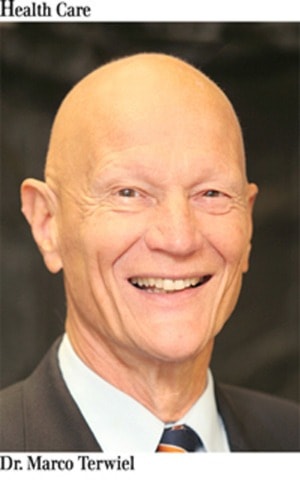I think it is a safe bet very few people would volunteer to move to Attawapiskat, the impoverished and dismal first nation community in northern Ontario.
A picture is worth a thousand words, and the images on TV shocked many people, and so they should.
We like to think that such conditions may exist in Haiti or Somalia, but in our own country?
I did not move to Attawapiskat nine years ago, but I encountered identical conditions in Nunavut. I did not know that in Nunavut the rate of violent crime is seven times that in the rest of our country, or that the homicide rate about 1,000 times the Canadian average.
Also, seven out of 10 children there go hungry, while many live in shoddy, government-built, three-room bungalows.
The suicide rate among Inuit males between 15 and 24 years old is 40 times the rate of their peers in the rest of Canada.
And the list goes on.
Had I known these sorry statistics, I probably would have said “no thank you” when the nice lady at the recruiting booth of a medical conference asked me if I wanted to put my years of experience to good use after I had closed my practice in preparation for retirement.
As they say, “Ignorance is bliss,” and even though the people at the University of Manitoba provided me with a thick binder full of useful information, followed by a day of orientation on the Inuit referral centre in Winnipeg, I was not prepared for what I found.
Annie, a surprisingly small Inuit lady, met me at the airport in Rankin Inlet and we shared a decrepit taxi with three other passengers, the luggage piled high in the back and the overflow between our legs.
After a short ride, we arrived at my lodgings for the next six weeks. My quarters were acceptable in retrospect after experiencing far lesser ones in other communities.
The place was decidedly dirty, the bed had been slept in and I had to go and hunt for clean sheets and towels. There was no shower curtain in the bathroom and it took several days to get one. The kitchen was equipped with a collection of mismatching plates, mugs, some cutlery, and pots and pans without matching lids. The dining table was OK after cleaning, but two of the matching chairs were broken. One of the windows would not close, and that meant having to do some snow shoveling in the living room after a blizzard.
This was fine compared to what many locals had to contend with, as I discovered later.
The people I worked with at the health centre were nice enough, the facility quite dated, but reasonably well equipped.
In many ways, I appreciated the pace of work: starting at 8.30 with a half-hour meeting with the staff, reviewing the previous night calls and problem patients. Thereafter, the appointments were 30 minutes per patient, a coffee break mid-morning, an hour for lunch, another mid-afternoon break, and at five, the clinic closed. Quite wonderful in comparison with the pressure cooker environment of my office or walk-in clinic, where I had to see at least six patients per hour for eight or nine hours, with a 15-minute break for lunch in order to deal with the volume of the demand.
All the patients first had to see a registered nurse or nurse practitioner, and only if they could not deal with the presenting problem I got involved.
The nurses looked after all the minor ailments, such as coughs, colds, ear infections, bladder infections. Problems they could equally well handle as the best doctor in the world.
That meant I once again was working as a real doctor, dealing with mostly serious or unusual problems. Professionally, a dream come true, utilizing all the knowledge and skills I had acquired over the years.
It took me all of the first six weeks to get the hang of where everything was located, who was supposed to do what, how to manage travel to Winnipeg or Churchill for further tests and treatment, find out what was available to eat and drink.
It was on subsequent stints that I started to gain insight in the Inuit culture and community, and what I discovered was not pretty.
To be continued.
Dr. Marco Terwiel is a retired family physician who lives in Maple Ridge.
